Spoiler warning and housekeeping
Hello! Golden Kamuy is a fairly long and involved manga plot, and I don’t go into plot-specific spoilers. I will mention the subject of a couple one-three issue side-stories, in case people want to go into it completely blind.
As the year winds down, I wanted to write something about a manga I’ve come to appreciate a lot: Satoru Noda’s Golden Kamuy.
While the series has a relatively simple premise of a country-spanning treasure hunt, it feels like it’s very difficult to quantify with just one genre. There’s so many different elements at play, I came to call it a “manga lover’s manga”; if you’ve read a wide variety of series, you’ll see a lot of their strengths at play here.
Golden Kamuy starts off with us being introduced to Saichi Sugimoto (or “Sugimoto the Immortal”), an ex-soldier from the Russo-Japanese war of 1904-1905. He hears of a stash of gold that’s tied to the Ainu people of Hokkaido (Japan’s northern island), and decides to hunt for it in order to help someone dear to him.
Along the way, he meets Asirpa, an Ainu girl who has a familial tie to the gold. She agrees to help Sugimoto, as her knowledge is key to deciphering the code that will lead to the treasure. The catch is that this code is tattooed on 24 different convicts of a specific prison, and there’s multiple factions gunning for the gold.
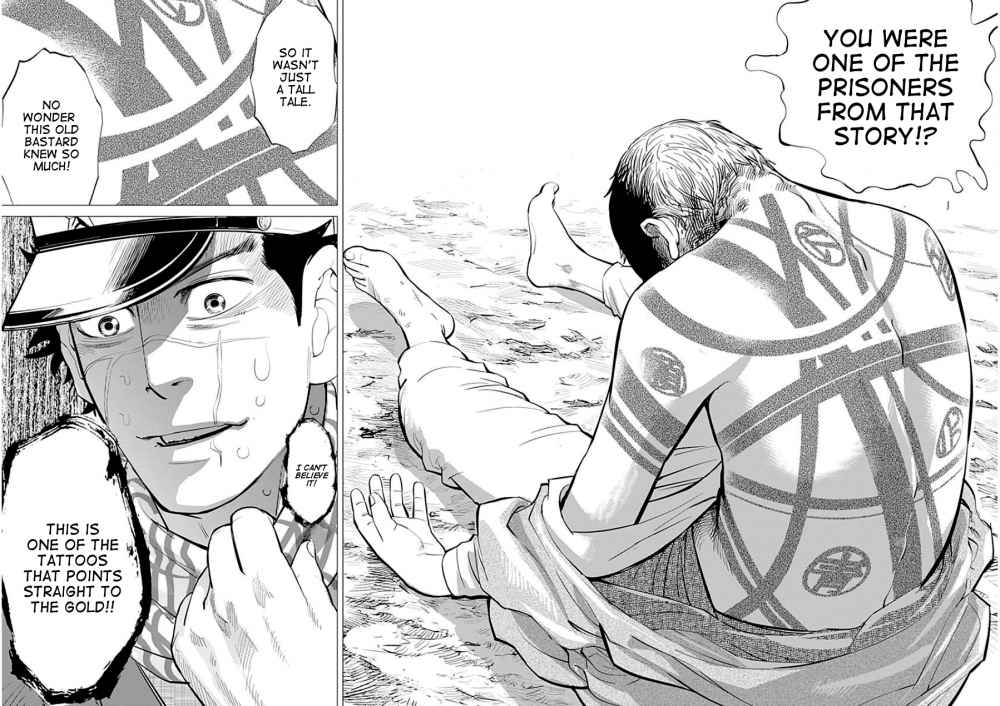
As I mentioned above, this premise seems so familiar, especially since I’ve read my fair share of manga. As a reader, you that they need to establish a premise that will drive the plot. Usually, these premises will have a “checkbox” or “count em off” gimmick, because it’s easy to show progression and the passage of time. When your story turns to collecting “Thing #8” after beginning with “Thing #1,” you know time has passed.
For example:
- There are seven Dragon Balls that Goku must find in Dragon Ball
- There’s multiple years and semesters for Deku to progress through in My Hero Academia
- Ash needs to collect eight gym badges in a Pokemon anime
- Luffy needs to visit a set number of islands in One Piece
- The Karasuno volleyball club have a series of volleyball games to play in order to progress in a tournament
These story beats are important, but often, they can get lost among the greater plot that emerges to raise the stakes. What starts off as Goku collecting the Dragon Balls turns into defending the Earth from a large evil. This transition from a personal goal to a moral compulsion (“to do good”) means that the protagonist can grow and become bigger than themselves.
My problem is usually that the initial premise is what hooks me into the series in the first place. As the scope widens, things feel like they become more generic. For example, I’m far more interested in Deku’s school life in My Hero Academia than I am with him facing the villainous faction looking to rule the world — unfortunately, that’s likely to be left behind more and more as the story reaches its conclusion.
In Golden Kamuy, numerous groups have been introduced, who all have different motivations for the gold. Despite some being more “bigger picture” than others, I don’t feel like anyone deserves it less; the gold is very much a “fulfiller of dreams”, or a means to an end. If a villainous faction is going to use it for villainous purposes, that’s they’re focus: the gold never stops being relevant, and it’s always there in the story.
This matters, mostly because it grounds the rest of the manga, and that’s needed. Sometimes, Golden Kamuy can make shifts in tone that makes you think you’re reading something completely different. I want to emphasize that this isn’t a bad thing, because it’s all anchored by the plot.
When Asirpa and Sugimoto take a chapter to hunt and cook an animal, it feels like a cooking series. When Aspira explains how that animal influences the Ainu culture, it feels like I’m learning more about Japan, its history, and how its indigenous people lived. For a couple chapters, it veers into wacky hijinks and nearly becomes an erotic manga, using some of its male cast for a heavy amount of fanservice.
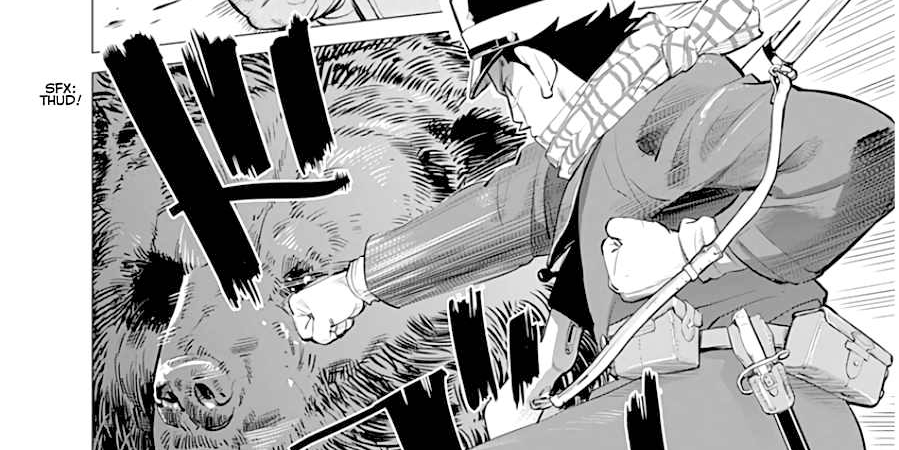
At the perfect moment, though, it veers back to the idea of the gold, the groups vying for it, and how they’re going to collect tattoos. It takes a delicate hand to be able to have things veer off the path of the main plot without getting too self-indulgent. It also risks those side stories meaning nothing in the context of the main one, and that can lead you to feel like you’re attached for no reason.
Every time we take a break from the gold, I’m learning something. I’m finding out more about the players, the motivations that drive them on this crazy treasure hunt, or how they interact with others. You feel rewarded for getting invested, and that’s something that every manga wants to be successful.
Normally I feel like I’d go into something deeper when it comes to analysis of a series, but it’s really hard to do in this case without spoiling it massively. I think that this is one of the best-written series today, and it’s supplemented by a deep passion for details and authenticity.
It’s a bit of a grey area to talk about scanlations, especially since Golden Kamuy has been licensed. You kind of approach the same feeling as video game emulation: until better alternatives arrive, they’re providing better accessibility and exposure to something that’s niche. I always feel weird acknowledging it because since it can be considered piracy, it’s very much a “don’t ask, don’t tell” kind of thing.
I will always advocate for paying creators for things you consume, and I’ve purchased series in full after reading them online, pre-licensing. In many cases, like with MangaPlus, you can read current Shonen Jump chapters simultaneously with their Japanese release.
The easiest way to stop piracy is not by putting antipiracy technology to work. It’s by giving those people a service that’s better than what they’re receiving from the pirates.
Gabe Newell
I feel like I need to set this up before going into one of my other points.
Anyway.
Golden Kamuy is steeped in references to Japanese culture and history from the turn of the 20th century. It also heavily involves the Ainu people, who are indigenous to Japan and have their own set of distinct practices, traditions, and vocabulary. Kamuy is extremely meticulous on accuracy, and they’ve received compliments from Ainu on how faithful the series is to their history.
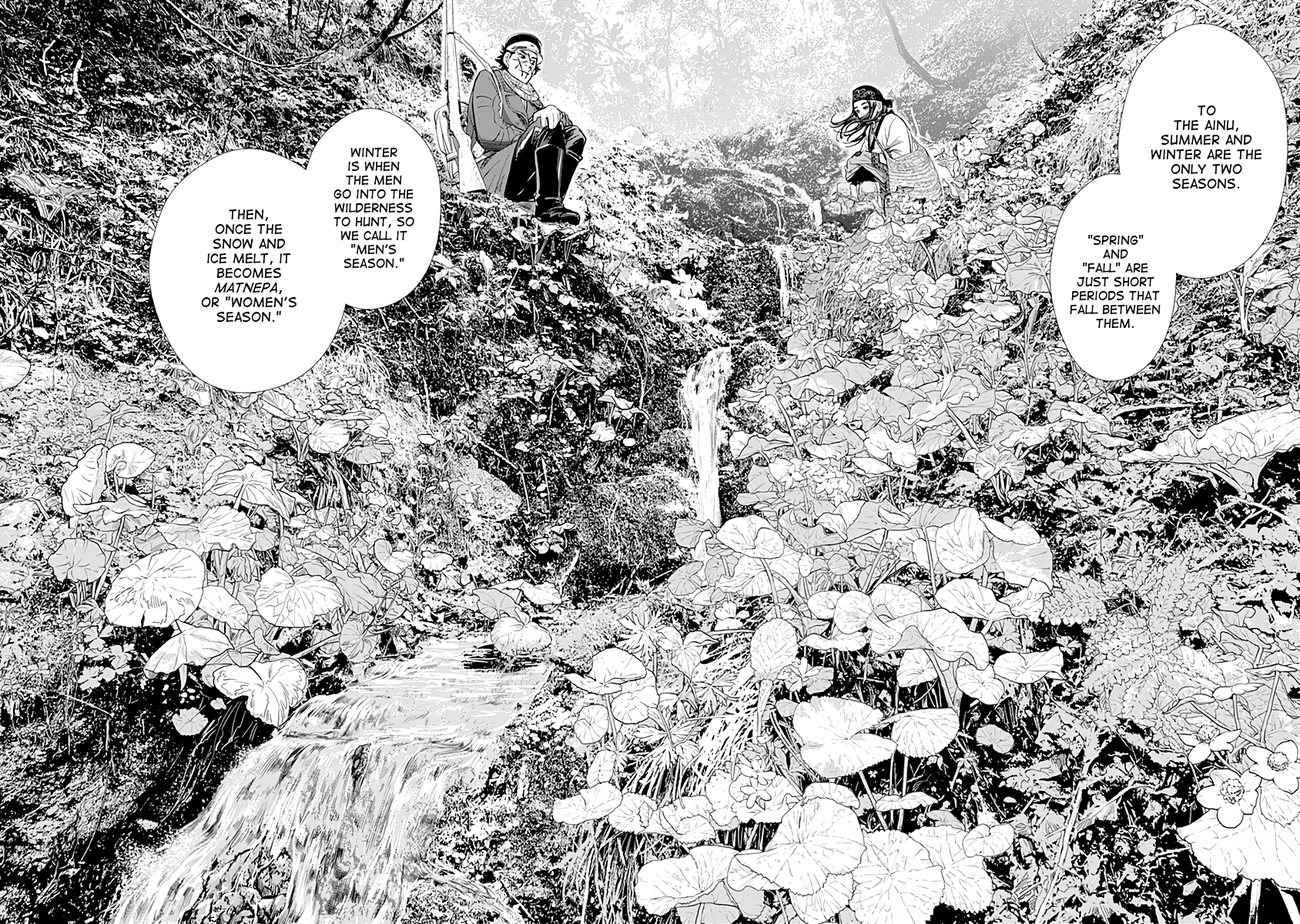
All this is a bit obtuse to someone like me, mostly because I’ve never been taught the history of Japan. I can also bet that the Ainu has similar problems to those that Indigenous Canadians/Americans face; a lot of their cultural knowledge takes a lot of research, is passed down orally, or is simply lost. It may not be taught to the average schoolchild, which means that continues to be obscure.
Below is an image from the British Museum Manga exhibit catalog (via @MinovskyArticle), with a passage from Ainu artist Kaizawa Tōru. He talks about the series, and how much effort went into making sure it was respectful to the source material.

Going back to the scanlator subject, I believe that Golden Kamuy is a special case due to the passion of the people working to bring it to English-speaking audiences.
#EverydayHeroes does a phenomenal, above-and-beyond job of researching every cultural reference that Golden Kamuy is throwing at us, and presenting it clearly in end-of-chapter summaries.
These can be things like translations, but also callbacks to previous chapters. They also make efforts to decipher things like the references in chapter splash pages — which might reference more contemporary work — or point out things like “hey, this character said something, and that something was in reference, to something someone else said 50 chapters ago.”
In the world of hobbyist translations, this isn’t something common, and I think it helps make Golden Kamuy feel special. They also translate Dungeon Meshi/Delicious in Dungeon, which I’ve written about before on this blog.
Despite not picking up the English release (yet), the omission of these notes would make that version feel lacking. It’s almost as if they picked up on the importance of making sure everything was understood, and put in the extra time to make sure it was done right.
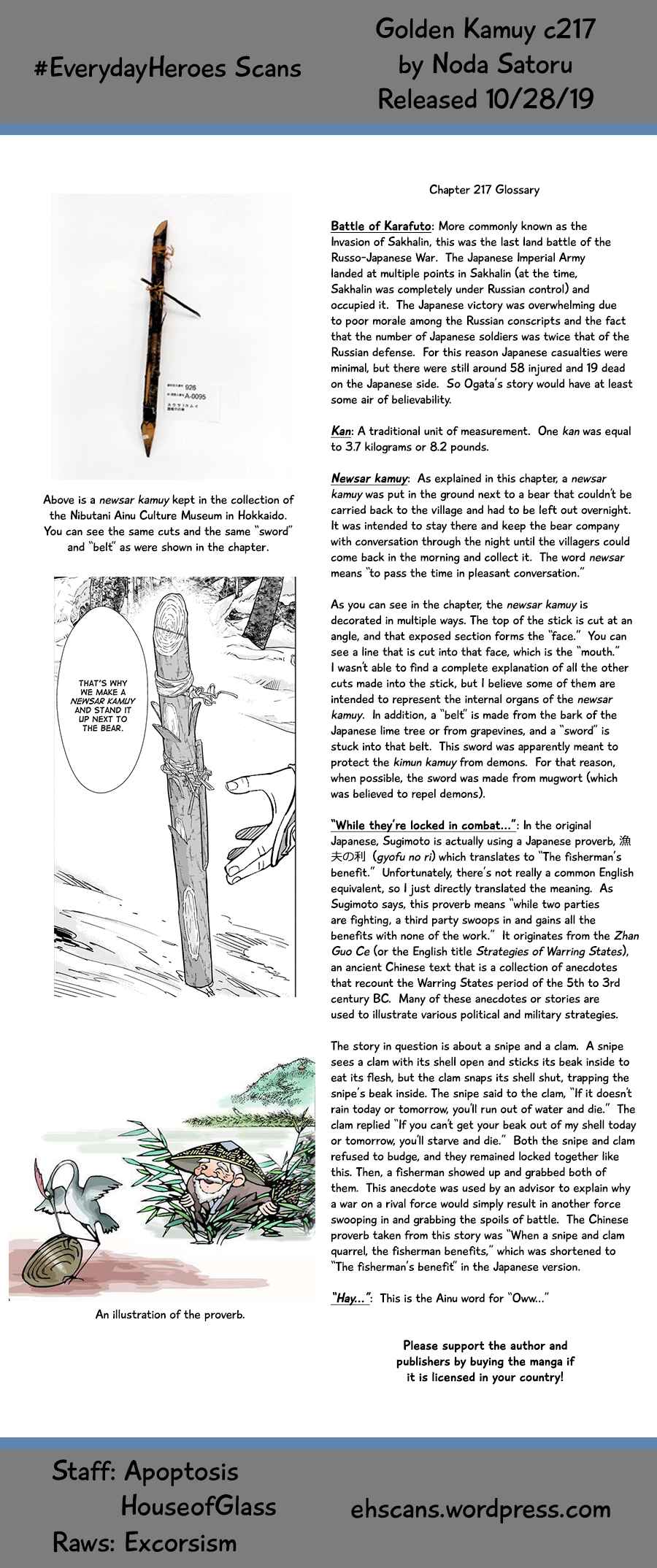
Golden Kamuy is not a gag manga. There are things that are funny, but the setting is treated care, compassion, and respect. That’s something I find admirable — it’s helped further my interest in Japanese culture, my own cultural roots, and how it all intersects to shape the person I am.
That feeling of growth and contemplation is becoming more and more of what I prize in manga, and why I find myself gravitating to seinen more often than not. I like series that inspire me with hope, and I like them to make me question myself and how I’ve chosen to develop as a person.
Golden Kamuy may not be the “hard work makes good” story that usually fits into this category, but I appreciate that it has a conviction in the plot it wants to tell, and how it inspires other people to care for it in turn. It gets me thinking about how I want to further my appreciation of Japan, and how, maybe when the pandemic is over, I can go about learning the language.
There’s something that always tugs me in a weird direction whenever I think about learning Japanese, or otherwise trying to engage more in that culture. I’ve read horror stories about what enthusiasts — “weebs” — do online, and how they treat the idea of Japan rather than the reality of it. I’m not exactly sure I’m much different.
My enthusiasm is coming from enjoyment of their cultural works, and what I’ve experienced during during my travel there. However, I feel guilty because I’m only really experiencing it from a comfortable distance, and it almost feels too convenient.
I’m not Japanese, and I can’t replace the idea of living that experience — I don’t feel I have the ability to comment on an interest in the Ainu, or an issue like Japan’s work culture, because I haven’t earned the right to do so. I want to respect what I’ve learned about Japan without making it about me, and how it services my enjoyment.
While someone would tell me that realizing that thought process makes it much less likely to happen, I have trouble quieting my brain. I had these same feelings during my trip to Japan; I didn’t want to be content just “being a tourist.”
Is it okay to be interested in the Ainu due to what I’ve learned from Golden Kamuy? Am I “doing enough,” or somehow doing further disservice to a culture that’s increasingly idolized and fetishized by fans online?
Can I even say that I think Ainu culture is interesting without needing to write a researched dissertation (well, like right now, I guess) to prove that I’m not just taking, taking, taking?
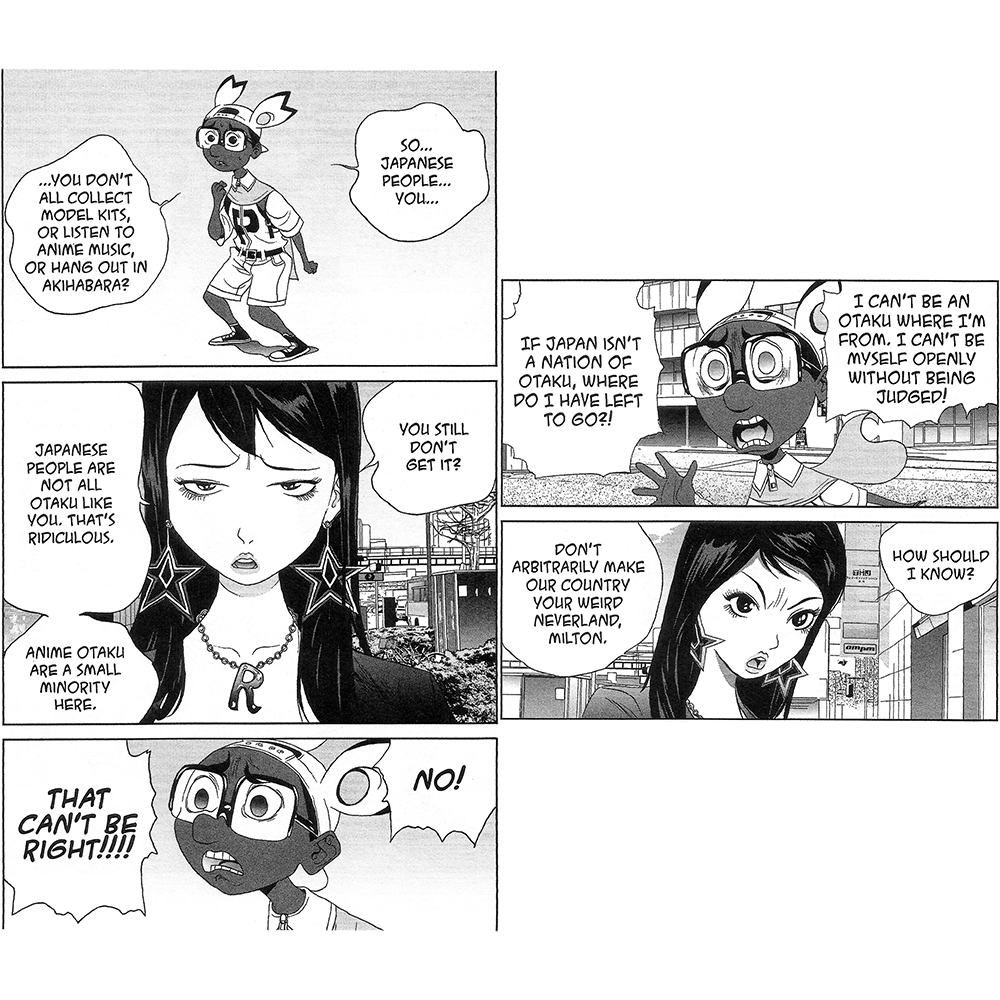
Endless things about cultural appropriation have been written about nerd stuff online, with varying degrees of zeal and fervor. I’m not about to say which take is the “right” one, but I do have a personal definition.
I believe that cultures can be appreciated, and a degree of awareness and care should be taken to seek as much of a complete truth as you can, rather than just something convenient.
I don’t believe it would be fair to a historically persecuted and ostracized people (like the Ainu) to suddenly take from their culture without proper care and respect. Saying “that looks cool” to an Ainu pattern and slapping it on a t-shirt to sell seems exploitative and hollow. I feel the same about First Nation war bonnets, mostly because they have specific meanings and connotations — people are allowed to set boundaries for what’s sacred to them.
However, I don’t believe that should exclude people from involving themselves in elements of culture that the culture themselves are willing to share. I also don’t believe that should exclude people from doing their own research and coming to their own conclusions. Read and learn about the war bonnet, but have compassion and empathy when someone tells you that you can’t wear one.
Feelings are complicated. I digress.
As 2020 comes to a close, I’m becoming more comfortable writing about things I love, even if admitting the reasons why can make me a bit awkward. I believe in pursuing authenticity and a genuine interaction above all else, and well, I’m glad that Golden Kamuy made me confront some things.
All we can do is keep growing in a way that harms real people as little as possible — if reading a great manga is where I’m going to start, I think I can make worse choices.
Note!
Starting in 2023, more of my writing will be on Substack, with only certain, personal posts making their was to this site. Consider subscribing to support my work.
Amazon links on this post may be affiliate links to help support Matt.

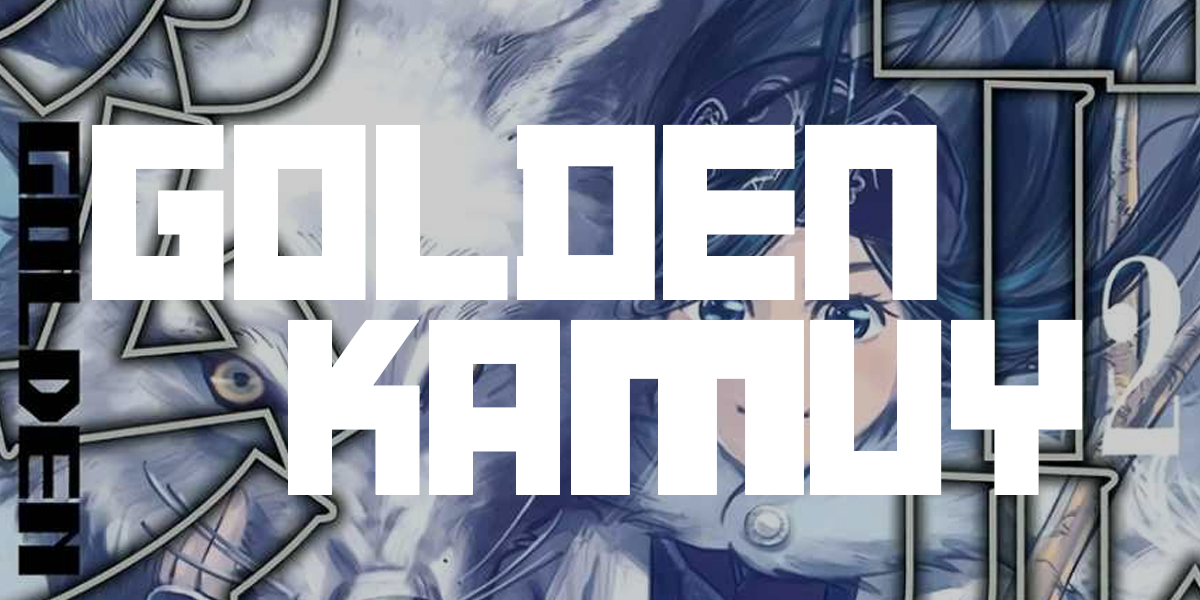
Leave a Reply